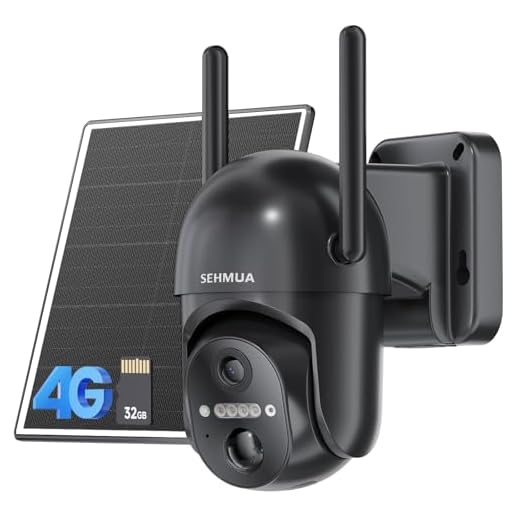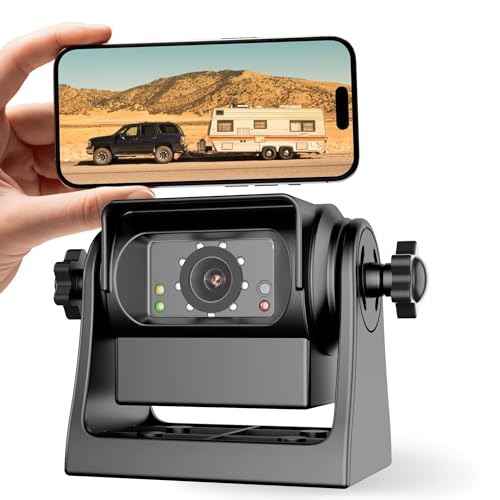




Video surveillance has become an integral part of modern security systems, providing a crucial tool for monitoring and recording activities in various environments. But when exactly was video surveillance invented, and how did it evolve into the sophisticated technology we have today?
The history of video surveillance dates back to the mid-20th century, with the first closed-circuit television (CCTV) systems being developed in the 1940s and 1950s. These early systems were primarily used for monitoring industrial processes and government facilities, rather than for security purposes.
It wasn’t until the 1970s and 1980s that video surveillance began to be widely adopted for security applications, with advancements in camera technology and recording capabilities making it more practical and affordable for businesses and homeowners.
The Origins of Video Surveillance
Video surveillance has a long and fascinating history, dating back to the late 1940s. The first closed-circuit television (CCTV) system was installed by Siemens AG in Germany in 1942 to monitor the launch of V-2 rockets. However, it wasn’t until the late 1960s that video surveillance systems became more widely used for security purposes.
In 1966, the first commercial video surveillance system was introduced by Vericon, which used analog cameras and monitors to provide real-time monitoring of various locations. This marked the beginning of the modern era of video surveillance technology.
Over the decades, video surveillance technology has evolved significantly, with the introduction of digital cameras, networked systems, and advanced analytics. Today, video surveillance is a ubiquitous tool used in various industries, from law enforcement and public safety to retail and transportation.
Early Cameras and Surveillance
Surveillance cameras have a long history dating back to the late 19th century. The first known closed-circuit television (CCTV) system was installed by German engineer Walter Bruch in 1942 to monitor the launch of V-2 rockets during World War II.
However, the concept of surveillance through visual recording predates CCTV technology. In the mid-19th century, the invention of the camera paved the way for the use of photography in surveillance. Early surveillance cameras were large and cumbersome, often requiring manual operation and film processing.
Evolution of Surveillance Technology
Surveillance technology has evolved significantly over the years, adapting to changing needs and technological advancements. Here are some key milestones in the evolution of surveillance technology:
- Early Surveillance: The earliest form of surveillance can be traced back to ancient civilizations, where guards were stationed to watch over important areas.
- Telegraph and Telephone: The invention of the telegraph and telephone allowed for communication over long distances, enabling remote monitoring and surveillance.
- Photography: The development of photography in the 19th century enabled the capture of images for surveillance purposes, such as wanted posters and mugshots.
- Video Surveillance: The 20th century saw the rise of video surveillance technology, with the first closed-circuit television (CCTV) systems being installed in public spaces for security monitoring.
- Digital Surveillance: The introduction of digital technology revolutionized surveillance, allowing for high-quality video recording, storage, and analysis.
- Networked Surveillance: Today, surveillance systems are often networked, allowing for remote access and monitoring from anywhere in the world. This has led to the widespread use of surveillance cameras in public spaces, businesses, and homes.
First Video Surveillance System
The first video surveillance system was invented by Walter Bruch, a German engineer, in 1942. Bruch developed a system to monitor the launch of V-2 rockets during World War II. The system used a camera with a closed-circuit television system to transmit images to a monitoring station.
The system allowed operators to remotely monitor the rocket launch in real-time, providing valuable information for tracking and analysis. This early video surveillance system laid the foundation for the modern CCTV (Closed-Circuit Television) systems we use today.
Advancements in Video Monitoring
Over the years, video monitoring technology has seen significant advancements, making it more efficient and effective in various applications. Some of the key advancements include:
- High-definition cameras: The introduction of high-definition cameras has greatly improved the quality of video footage, allowing for clearer images and better identification of individuals.
- Remote monitoring: With the development of remote monitoring capabilities, users can now access live video feeds from anywhere using their smartphones or computers, enhancing convenience and accessibility.
- Video analytics: The integration of video analytics software enables advanced functions such as motion detection, facial recognition, and object tracking, enhancing the overall security and monitoring capabilities.
- Cloud storage: Cloud-based storage solutions have revolutionized the way video data is stored and accessed, providing scalability, flexibility, and improved data security.
- Integration with other systems: Video monitoring systems can now be seamlessly integrated with other security systems such as access control and alarm systems, creating a comprehensive security solution.
Impact of Video Surveillance
Video surveillance has had a significant impact on various aspects of society and security. One of the key benefits of video surveillance is its ability to deter crime and prevent unauthorized activities. The presence of cameras in public places and private properties acts as a deterrent to potential criminals, reducing the likelihood of criminal activities.
Moreover, video surveillance plays a crucial role in enhancing the safety and security of individuals and properties. By providing real-time monitoring and recording of events, video surveillance systems help in quick response to emergencies and incidents, thereby improving overall safety measures.
Additionally, video surveillance has been instrumental in solving crimes and providing crucial evidence in legal proceedings. The footage captured by surveillance cameras serves as valuable evidence in investigations, helping law enforcement agencies to identify suspects and establish timelines of events.
Furthermore, video surveillance has been utilized in various industries and sectors to enhance operational efficiency, monitor employee activities, and improve customer service. From retail stores to transportation hubs, video surveillance systems have become an integral part of modern security and management practices.
In conclusion, video surveillance has revolutionized the way we approach security and monitoring, offering numerous benefits in deterring crime, enhancing safety, and improving operational efficiency across different sectors.
Modern Security Solutions
With the advancement of technology, modern security solutions have greatly evolved to meet the growing needs of businesses and individuals. Video surveillance systems have become an integral part of security measures, providing real-time monitoring and recording capabilities to enhance safety and security.
Today, video surveillance systems offer high-definition cameras, advanced analytics, and remote access features that allow users to monitor their premises from anywhere in the world. These systems can be integrated with other security technologies such as access control systems and alarms to create a comprehensive security solution.
Furthermore, the use of artificial intelligence and machine learning in video surveillance has revolutionized the way security is managed. These technologies enable automated monitoring, behavior analysis, and threat detection, making it easier for security personnel to identify and respond to potential security risks.
| Key Features of Modern Security Solutions: |
| High-definition cameras for crystal-clear images |
| Advanced analytics for intelligent video processing |
| Remote access for monitoring on-the-go |
| Integration with other security systems for enhanced protection |
| Artificial intelligence and machine learning for automated monitoring |
Overall, modern security solutions have paved the way for a more efficient and effective approach to security management, ensuring the safety of people and assets in various environments.
Future Trends in Video Monitoring
As technology continues to advance, the future of video monitoring is poised to undergo significant changes. Some key trends to look out for include:
1. Artificial Intelligence Integration
AI-powered video analytics will play a crucial role in enhancing the capabilities of video monitoring systems. Machine learning algorithms will enable real-time analysis of video feeds, identifying anomalies and potential threats more accurately.
2. Cloud-Based Video Surveillance
Cloud storage and processing will revolutionize video monitoring by enabling remote access to video feeds and data from any location. This will increase flexibility and scalability while reducing the need for on-site hardware.
Benefits of Video Surveillance
Video surveillance offers a wide range of benefits for both residential and commercial environments. Here are some key advantages:
1. Enhanced Security
One of the most significant benefits of video surveillance is enhanced security. By monitoring your property with cameras, you can deter potential intruders and quickly identify any suspicious activity. This can help prevent theft, vandalism, and other crimes.
2. Remote Monitoring
With video surveillance systems that offer remote access, you can keep an eye on your property from anywhere in the world. This is especially useful for businesses that have multiple locations or for homeowners who want to check in on their property while they are away.
Overall, video surveillance provides peace of mind, increased safety, and valuable evidence in case of any incidents.
Legal and Ethical Considerations
As video surveillance technology continues to advance, it raises important legal and ethical considerations. One of the key concerns is the right to privacy. Individuals have the right to be protected from unwarranted surveillance and have their personal information safeguarded.
Organizations that use video surveillance must adhere to strict regulations regarding the collection, storage, and use of footage. They must also ensure that surveillance is used only for legitimate purposes, such as security and safety.
Regulatory Compliance
Businesses must comply with laws and regulations governing video surveillance, such as the General Data Protection Regulation (GDPR) in Europe. Failure to comply can result in hefty fines and legal repercussions.
Transparency and Consent: It is crucial for organizations to be transparent about their use of video surveillance and obtain consent from individuals who may be captured on camera.
Ethical Use
It is essential for organizations to consider the ethical implications of video surveillance. They must balance the need for security with respect for individual privacy and dignity.
Choosing the Right Surveillance System
When selecting a surveillance system for your home or business, there are several key factors to consider to ensure you choose the right one:
| Location: | Determine the areas you want to monitor and consider the lighting conditions in those locations. |
| Camera Type: | Choose between dome, bullet, or PTZ cameras based on your surveillance needs. |
| Resolution: | Higher resolution cameras provide clearer images but may require more storage space. |
| Storage: | Decide whether you want to store footage locally or use cloud storage for easier access. |
| Remote Access: | Look for systems that offer remote viewing capabilities so you can monitor your property from anywhere. |
| Budget: | Set a budget and choose a system that fits your financial constraints while meeting your surveillance needs. |







